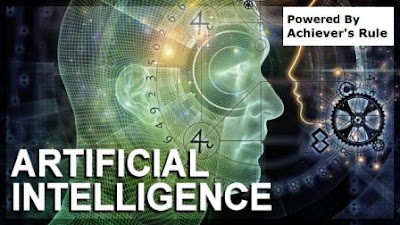
Artificial Intelligence - Complete Study Notes
Introduction:
Artificial Intelligence is the branch of Computer Science which is concerned with the automation of intellectual performances. It is the field of study that encompasses computational techniques to perform the task which requires intelligence while performed by the human. It recognizes its surroundings and maximizes the chances of success. The term “Artificial Intelligence” is used to describe the “intelligence” which the system demonstrates. For this reason it is also known as the “Computational Intelligence”.
Facts about Artificial Intelligence:Artificial Intelligence is the branch of Computer Science which is concerned with the automation of intellectual performances. It is the field of study that encompasses computational techniques to perform the task which requires intelligence while performed by the human. It recognizes its surroundings and maximizes the chances of success. The term “Artificial Intelligence” is used to describe the “intelligence” which the system demonstrates. For this reason it is also known as the “Computational Intelligence”.
- The term “Artificial Intelligence” was first used in the year of 1956.
- The beginning of AI is associated with the Computer Scientist Allen Turing.
- Using the concept of AI, an intelligent computer system can be designed which is able to understand language learning, reasoning and solve problems like a human.
Categories of Intelligent System:
The Artificial Intelligence can be divided into four categories. First two out of the following four categories focus on the reasoning and rest two on behavior.
The Artificial Intelligence can be divided into four categories. First two out of the following four categories focus on the reasoning and rest two on behavior.
- System thinks like Human (Human Framework)
- System thinks rationally (General Concept of Intelligence)
- System acts like Human (Human Framework)
- System acts rationally (General Concept of Intelligence)
Goals of Artificial Intelligence-
- Engineering Based Goal of AI- It includes developing concept, theory and practice of building intelligent machines that can act like human.
- Science Based Goal of AI- It includes the mechanism of building intelligent and expert systems that exhibit learn, understand, explain and advice to other users.
Components of the “Artificial Intelligence” based system-
An “Artificial Intelligence” based system converts the knowledge of an expert in a specific discipline into a software code. This code can be merged with other codes and used for answering the question on the subject through a computer. The system consists of three parts.
An “Artificial Intelligence” based system converts the knowledge of an expert in a specific discipline into a software code. This code can be merged with other codes and used for answering the question on the subject through a computer. The system consists of three parts.
- Knowledge Base- It contains the information acquired by the experts and logic rules to govern the information.
- Interference Engine- It interprets the submitted problems against the rules and logic of information stored in the knowledge base.
- Interface- It allows the users to express the problem in any of the human languages.
Branches of Artificial Intelligence-
- Logical Artificial Intelligence- It is represented by the mathematical language.
- Search- AI programs can examine large number of possibilities.
- Pattern Recognition- It compares what it views with a pattern.
- Representation- It uses the Mathematical Logic to represent facts about world.
- Interference- It includes the methods of Monotonic and Non Monotonic Reasoning.
- Common Sense of Reasoning and Knowledge
- Learning from Experiences
- Planning- It generates strategy to achieve a goal.
- Epistemology- It is the study of Knowledge to solve problems.
- Ontology- It is the study of existing things.
- Genetic Programming
- Heuristics- It is the path to discover a new idea regarding a program.
Problems of Artificial Intelligence-
- It does not imply perfect understanding.
- Every intelligent being has a limited perception, memory and computation ability.
Application of Artificial Intelligence-
- Natural Language Processing (NLP)- The basic goal of NLP is to enable a person to communicate with a computer in a language which they uses in their lives every day.
- Computer Vision Systems
- Speech Recognition
- Robotics
- Neural Network
- Planning and Scheduling
- Gaming
- Handwriting Recognition
- Fraud Detection










Post a Comment